Contemporary Mexico’s cultural influence is a lively and fast-growing force. It reaches people across the globe with a mix of ancient traditions, colonial history, and fresh ideas. This wide impact is not a short-lived fad. It comes from a long, rich story that spans thousands of years. From early civilizations that shaped its identity to today’s art, film, fashion, and food, Mexico keeps updating how it presents itself to the world. Its heritage is alive. It adapts, inspires, and adds value far beyond its borders.
Contemporary Mexico’s cultural influence worldwide
What drives Mexico’s growing cultural presence?
Mexico’s rise comes from deep history and a strong ability to blend different influences. Mexican culture grew from both Indigenous roots and Spanish rule, shaped over many centuries. It also includes touches from Europe, Africa, and Asia. The result is a rich mix on par with large, diverse countries like India or China.
A strong sense of pride also supports this energy. Many Mexicans carry the saying “Como México no hay dos” (There is none other like Mexico). People often know their history well-from the Aztecs and Maya to later events that formed national identity. This shared memory drives people to celebrate, protect, and share their culture with others.
Key factors shaping the international impact
Several elements help spread Mexican culture worldwide:
- State support for cultural fusion (mestizaje) since the late 1800s, which built a shared identity that speaks to many audiences.
- Large regional variety across 32 states-deserts, high plateaus, forests, and coasts-feeding distinct cuisines, music styles, and crafts that keep evolving and traveling abroad.
- Close ties with the United States. Some U.S. customs come in, but artists and communities often give them a Mexican spin, keeping a clear local voice in a global setting.
Arts and creative industries fueling influence
Mexican muralism and visual arts on the global stage
Mexican muralism grew after the Revolution in the early 1900s and still shapes public art today. Diego Rivera, José Clemente Orozco, and David Siqueiros turned walls and buildings into public stories about society and politics. Rivera’s work shows everyday people, social struggle, and hope. His example pushes artists around the world to use art to speak about justice and community.
Beyond murals, visual arts in Mexico are wide and varied. Handicrafts (artesanías) such as Taxco silver, Oaxaca textiles, and Puebla’s Talavera pottery reflect local history and skill. These works draw travelers and collectors and support local jobs. Modern artists like Gabriel Orozco, Teresa Margolles, and Minerva Cuevas focus on global themes, while Mexico City has become a major art hub with events like Mexico City Art Week and Zona MACO.
| Field | Names/Examples | Global reach |
|---|---|---|
| Muralism | Rivera, Orozco, Siqueiros | Public art as social voice |
| Handicrafts | Taxco silver, Oaxaca weaves, Talavera | Tourism, export, heritage |
| Contemporary art | G. Orozco, Margolles, Cuevas; Zona MACO | International fairs and shows |

Literature and renowned Mexican authors
Mexican writing draws from both Indigenous and European roots. Before Spain, poets like Nezahualcóyotl set early models. During the colonial period, Juan Ruiz de Alarcón and Sor Juana Inés de la Cruz left a strong mark. Sor Juana, a 17th-century nun and scholar, argued for women’s learning and the power of reason. Her ideas still matter in Mexico and beyond.
In the 1900s, Octavio Paz (Nobel, 1990) and Carlos Fuentes added major works about identity, politics, and justice. Paz often explored how Mexican culture relates to the wider world. Today, authors like Elena Poniatowska, Juan Villoro, Valeria Luiselli, Yuri Herrera, and Fernanda Melchor write about migration, inequality, memory, and the issues of modern Mexican life. Their books reach readers worldwide.
Contemporary Mexican cinema and international acclaim
Mexican film has surged again in recent decades. The Golden Age (1930s-1960s) made stars like Pedro Infante, Dolores del Río, and María Félix famous across borders. Today, directors such as Alfonso Cuarón, Guillermo del Toro, and Alejandro González Iñárritu win major awards, including multiple Oscars. Their movies often mix touches of fantasy with clear social themes, drawing audiences everywhere.
The late-20th-century wave known as “Nuevo Cine Mexicano,” with directors like Arturo Ripstein and Felipe Cazals, set the stage for this success. Now the industry spans many styles-from the comedies of Eugenio Derbez to the dark stories of Issa López. Mexican film keeps winning fans and shaping global cinema.
Architectural innovation and urban aesthetics
Mexico’s buildings tell a long story: ancient sites, colonial styles, and modern design. Teotihuacan’s pyramids and the vast Pyramid of the Sun show early engineering and vision. Chichén Itzá’s Kukulkán Pyramid links math, astronomy, and stonework with amazing precision.
Colonial builders brought New Spanish Baroque and Mexican Churrigueresque, blending European, Indigenous, and Moorish touches. Mexico City’s Palacio de Bellas Artes mixes Art Nouveau and Art Deco and hosts major events. In the 20th century, Luis Barragán earned the Pritzker Prize for designs that join tradition and modern forms; his own home is a World Heritage Site. Today, Enrique Norten, Mario Schjetnan, and Michel Rojkind push new ideas while respecting the past, shaping cities that feel both current and rooted.
Music, dance, and performance: Mexico’s rhythms abroad
Contemporary reinterpretations of traditional genres
Mexico’s music honors old forms while trying new ones. Mariachi, with trumpets, violins, and strong vocals, is a national symbol and is listed by UNESCO. New artists keep adding fresh ideas to its stories about love, pride, and daily life. Banda, Norteño, and Ranchera also evolve with new instruments and styles, reaching wider audiences.
Dance follows a similar path. The Jarabe Tapatío (Mexican Hat Dance) tells a courtship story, while Michoacán’s Danza de los Viejitos uses humor. Performers now present these dances in modern settings, sometimes mixing them with theater or performance art. The Voladores de Papantla ritual, with flyers circling from a tall pole, keeps ancient beliefs alive and continues to amaze visitors from around the world.

Popular Mexican artists and collaborations worldwide
Pop, rock, and hip-hop are strong in Mexico, and many artists weave in local sounds. Bands like Café Tacvba and Molotov gained fans abroad by mixing rock with folk elements. Pop stars such as Thalía and Paulina Rubio brought regional flair to global charts, showing how flexible Mexican music can be.
Reggaeton and Latin trap opened new doors for Mexican performers. Peso Pluma’s “Ella Baila Sola” became the first regional Mexican song to hit the top 10 on the Billboard Hot 100 and led global streams on Spotify. Cross-border collaborations grow each year, bringing Mexican beats to new listeners. Mexico City’s Vive Latino festival-one of Latin America’s largest-draws acts and fans from many countries.
Cuisine and gastronomy: Mexico’s flavors influencing global palates
Regional dishes gaining international popularity
UNESCO recognizes Mexican cuisine as cultural heritage. Its variety mirrors the country’s landscapes and peoples. Tacos and guacamole are famous everywhere, but regional dishes are winning more fans. Central Mexico’s mole poblano blends chiles, spices, and chocolate into a rich sauce. Yucatán’s cochinita pibil uses citrus and achiote to marinate pork, then cooks it slow and tender.
The north is known for beef and goat dishes like carne asada and birria. Coastal regions offer fresh seafood, with ceviche and aguachile on many menus abroad. Chiles en nogada, created in Puebla in 1821 to honor independence, carries the green, white, and red of the flag. These dishes tell stories about people, places, and shared memories.

Mexican ingredients and culinary techniques abroad
Mexican food also spreads through its key ingredients and cooking methods:
- Corn (maíz): base for tortillas, tamales, and pozole.
- Chiles: jalapeño, serrano, habanero, and many more add heat and flavor.
- Avocado: now common worldwide, from salads to toast.
- Cacao: the root of chocolate, first used in ancient Mesoamerica.
- Nixtamalization: treating corn with lime to boost nutrition, flavor, and texture.
Chefs in Mexico keep traditions alive while trying new ideas. Their work spreads techniques and ingredients to kitchens around the world and helps set food trends.
Fashion and design emerging from Mexico
Blending traditional elements with global trends
Mexican fashion draws deeply from Indigenous weaving and embroidery. The huipil (colorful tunic), rebozo (shawl), and sarape (striped shawl) carry identity and history, not just style. They often show community ties or status.
Today’s designers borrow motifs, textiles, and craft methods and mix them with modern cuts. The charro suit, a formal outfit linked to cowboy culture, stands as a symbol of national pride and influences formalwear. This mix of old and new gives Mexican fashion a clear voice on the global scene.
Mexican designers on the international scene
Designers and brands such as Carla Fernández and Pineda Covalín gain attention for work that honors culture and uses sustainable methods. Many partner with Indigenous artisans, paying fairly and keeping expert skills alive. The result is high-quality clothing, textiles, and jewelry with clear roots and careful making.
Mexico City, Guadalajara, and Monterrey host major shows like Mercedes-Benz Fashion Week Mexico. These events bring together high fashion, streetwear, and craft. Travelers seek local boutiques, and designers grow their reach while staying true to heritage. Blending tradition with modern style is helping Mexican design gain more space worldwide.
Linguistic diversity and export of Mexican Spanish and slang
Impact of Mexican Spanish in global media and entertainment
Mexico is the largest Spanish-speaking country and has 68 national languages, 63 of them Indigenous. This mix shapes a distinct form of Spanish with its own sounds, sayings, and slang. That voice travels through TV dramas, films, and music across Latin America and beyond.
Expressions from Mexico often enter everyday speech in other Spanish-speaking places. Words with Nahuatl roots-like “chocolate,” “coyote,” and “avocado”-also moved into English, showing deep, long-lasting exchange. In this way, Mexican Spanish helps carry culture and build links across borders.
Global celebrations, festivals, and Mexican traditions
Major Mexican festivals celebrated internationally
Mexico’s festivals draw people in many countries. Día de los Muertos (Day of the Dead) combines Indigenous ideas with Catholic customs and takes place on November 2. Families build altars with marigolds, sugar skulls, photos, and favorite foods to honor loved ones. UNESCO lists it as cultural heritage. The holiday now inspires art, movies, and public events globally, making graveyards places of color and remembrance.

Other traditions also travel. During Christmas, people celebrate Las Posadas, which reenacts the search for shelter by Mary and Joseph. Piñatas appear at birthdays and holidays worldwide. The Virgin of Guadalupe holds deep meaning for many, and her day brings together communities at home and abroad. These events show how faith, family, and joy remain central in Mexican life.
Diaspora communities and cultural maintenance
Mexican communities abroad, especially in the United States, keep traditions strong outside the homeland. Families, local groups, and festivals pass on language, food, music, and holidays to the next generation. These activities help culture grow in new places.
Many people form “hometown associations” that support projects back in Mexico. This two-way link lets culture move and adapt in both directions. It also helps host countries learn about Mexican traditions. The result is a living culture that changes with time while keeping its core.
Economic and tourism contributions of Mexican culture
Creative exports and contributions to the global economy
Mexico’s culture also brings in money. Films, books, and visual arts reach global markets, drawing investment and sales and raising the profile of creators. Success by directors like Alfonso Cuarón and Guillermo del Toro brings awards and jobs and feeds a wider film industry at home.
Handicrafts-pottery, textiles, metalwork, woodwork-sell well abroad and support many local families. Mexican food exports also grow, from cacao and avocado to sauces and spices. Restaurants and food media build demand too. Culture, in short, drives both recognition and income for Mexico.
Cultural tourism and heritage destinations
Mexico is a major destination for people who travel to learn about history and culture. It has 34 UNESCO World Heritage Sites, the most in the Americas. Ancient sites like Teotihuacan, Chichén Itzá, and Monte Albán attract visitors who want to see the scale and skill of early cities.
Colonial towns with Baroque churches and lively squares bring in many travelers as well. Large events-such as Día de los Muertos-fill streets with color and music. This kind of tourism brings money to hotels, restaurants, and local shops. It also supports the care of historic places and living traditions and builds respect for Mexico’s identity.
Challenges and opportunities for Mexico’s cultural influence
Balancing preservation and innovation
One big challenge is how to protect heritage while still moving forward. People want to keep languages, crafts, and rituals from fading. At the same time, culture changes with new times and needs. There is a risk that living traditions get reduced to souvenirs for visitors instead of staying part of daily life.
There is also a big chance to grow. Many creators weave pre-Hispanic symbols and ideas into modern work. This keeps roots strong while making new art and stories. Supportive groups and fair policies can help both the old and the new, so Mexican culture keeps its true voice while staying open to change.
Addressing cultural appropriation and rights
As Mexican fashion, designs, and foods become popular, misuse can follow. Copying Indigenous designs without credit or pay harms communities and empties symbols of their meaning. It repeats old power imbalances and blocks real exchange.
Mexico has taken steps to protect these rights. The 2022 Federal Law for the Protection of the Cultural Heritage of Indigenous and Afro-Mexican People and Communities requires consent for use and creates penalties for abuse. Fair partnerships can replace misuse with shared work, clear credit, and real benefits for the people who created the designs and practices.
Role of government and institutions in cultural promotion
Public bodies and cultural groups are very important in this effort. The Instituto Nacional de Lenguas Indígenas (INALI) backs 63 Indigenous languages through bilingual schooling, public signs, and media. Grants, venues, and training help artists, filmmakers, and musicians do their work.
Problems remain. Looting and damage at sites still happen because of trade in artifacts, careless building, and pressure from visitors. Funding and jobs from culture often arrive in pieces, not as part of a joined-up plan. Better laws, local participation, and cross-border partnerships can help. Clear strategies can protect heritage, support creators, and spread benefits to communities, so influence grows in a fair way.
Future prospects of Mexican cultural influence worldwide
Potential for new collaborations and growth areas
The road ahead looks bright. As people across the globe look for real and diverse stories, Mexico has much to share. In music, more artists will likely reach new markets-with traditional sounds, pop blends, electronic textures, and hip-hop beats. Work with producers and singers from other countries will likely increase and bring new mixes.
Fashion and design can also grow fast. Many designers focus on sustainability and craft, which matches what many buyers want now. Online stores and digital platforms give artisans direct access to foreign customers. Food will keep spreading too-through festivals, chef exchanges, and wider use of regional ingredients and methods.
Mexico’s leadership in global cultural diversity
Mexico can lead on cultural diversity. Its history of mestizaje-where Indigenous and European roots formed a new culture-offers a useful path for living together with respect. The constitution calls Mexico a “pluricultural nation,” and the state works to keep 68 national languages alive. That gives Mexico a strong base to speak up for cultural variety worldwide.
Hosting large gatherings, such as UNESCO’s Mondiacult in 2022, shows its commitment to linking culture with sustainable development. By backing the rights of cultural and language minorities and by letting traditions grow while staying rooted, Mexico can help other nations do the same. Its active, ongoing cultural life proves how creativity, memory, and exchange can lift people everywhere.




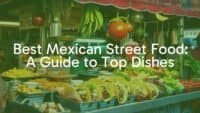


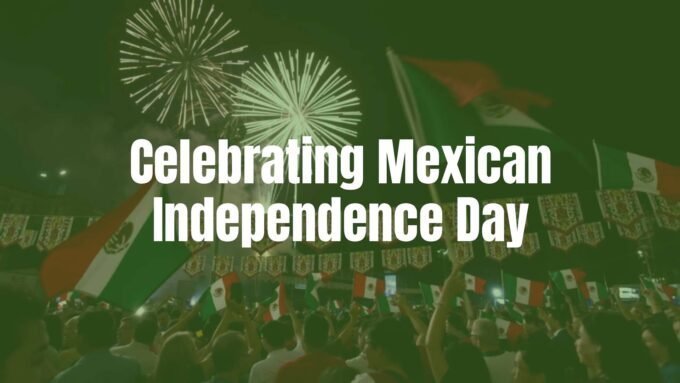
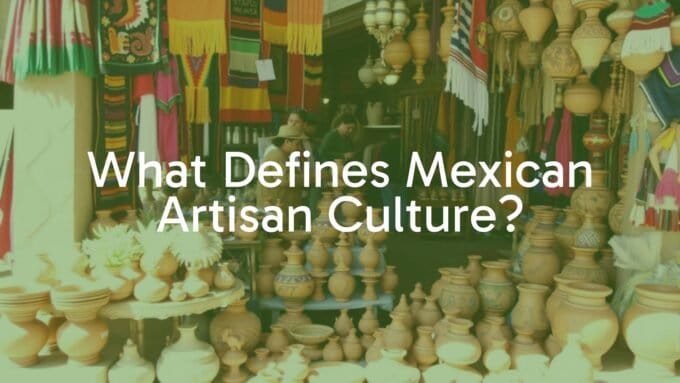
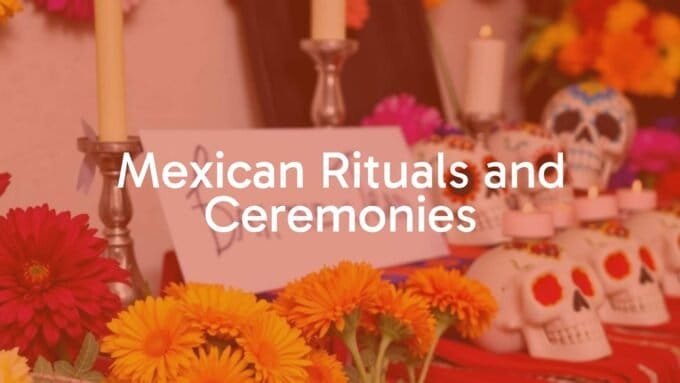

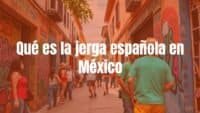
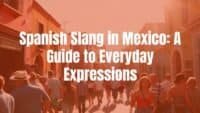
Leave a comment